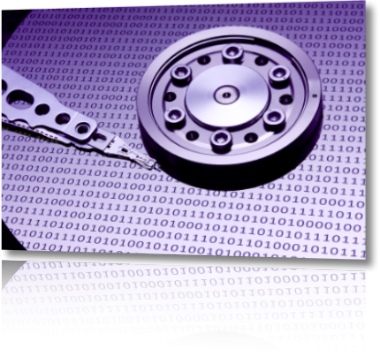 You do have one, haven't you? If you don't, you might find what follows interesting. I will describe my own backup strategy, which is probably an overkill for most users' needs, but will give you an idea of some available options and the corresponding "recovery time". I mention the recovery time because for me it's a key point in a backup strategy: how long will it take, in case of data loss, to get back to an acceptable working condition?
You do have one, haven't you? If you don't, you might find what follows interesting. I will describe my own backup strategy, which is probably an overkill for most users' needs, but will give you an idea of some available options and the corresponding "recovery time". I mention the recovery time because for me it's a key point in a backup strategy: how long will it take, in case of data loss, to get back to an acceptable working condition?
My strategy consists of three different backup techniques.
Disk clone
This is a complete backup of a machine, which offers very fast recovery and is easy to set up. If you use this strategy the way it was designed to work, you simply have to plug your backup hard disk to a new machine, or use it to replace a faulty hard drive, and you are up and running. To increase the security, I actually backup to an encrypted disk image (two of them in truth, swapped weekly). The advantage of using a disk image, besides securing your data, is the possibility to store multiple backups on the same disk, with no interference with other data which might be on the backup drive. I use a mirrored RAID for this. Obviously, you cannot boot from an encrypted disk image; you can, however, restore it onto a new hard drive and the result will be bootable. The application that I use for the backup is called SuperDuper!, and has the advantage of supporting incremental backups very well, therefore being fast.
Time Machine
I have set up a Time Machine backup as well, to benefit from the versioning of the files and the tight integration in the OS. To guarantee security, my Time Machine destination disk is fully encrypted using PGP WDE. Time Machine also guarantees a short recovery time (though not as short as a clone), allowing you to re-create quickly a bootable copy of the disk you backed up. The catch, when using PGP WDE, is that you can't restore booting from a Leopard DVD: you need a recovery system with PGP installed (and a copy of your encryption key as well). I keep such a system on a USB thumb-drive.
Offsite Backup
The previous two solutions can be more than sufficient, especially if you implement them at different locations. If you want to add even more security, you can use an off-site backup solution. I have tested a couple of them a long time back, and selected CrashPlan. The program is now free and it allows you to backup virtually everywhere: external disks, remote machines (folks at CrashPlan suggest using friends' machines), and CrashPlan own data vault.
Obviously, data are encrypted before leaving your machine, and nobody but you can access the backup. Two big advantages of this strategy: you files are backed up in real-time (i.e. every time a file is modified, it is sent over), and you can access your data from everywhere. Ever needed that important file you accidentally deleted or overwritten? The files are versioned as well, so you can get back to previous versions of your files. Downside of this solution is the offsite storage cost, and the bandwidth usage: I do not recommend backing up an entire system this way, but for important data it's probably the best solution. Also, depending on where your data are stored, the recovery time may be extremely long.
Remember: better safe than sorry!